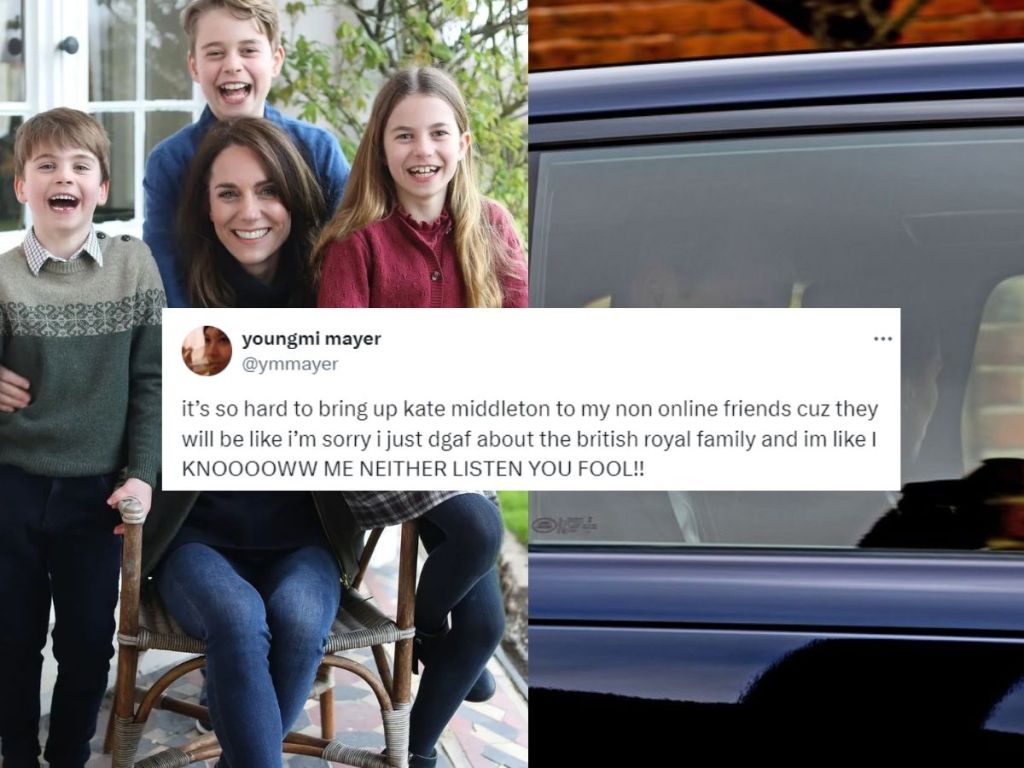By now, we’ve all seen Kensington Palace’s train wreck public relations strategy, thanks to the digitally manipulated photo of Kate Middleton with her children.
The Princess of Wales issued a short and strange apology on X, declaring herself to be a photoshop hobbyist and “occasionally experiments with editing”. As of writing, she was reportedly “shaken” by the waves of criticism towards the family portrait.
An insider at the Royal Family told UK outlet The Times that Kate Middleton was just attempting to “make it the best it could be”. She understood how important it was for them to present “a nice picture”.
Now, CNN is demanding that all old photos supplied by Will and Kate be reviewed. The controversy has snowballed into a bigger debacle that even Harry and Meghan’s photographer has been dragged into the saga.
Since then, the British press has released another photo of Prince William and Kate Middleton in a car, supplied by photo agency Goff Photos. But again, social media users have circled suspicious details in the photo – who is that train wreck of an intern working for the agency?!
Perhaps Kate Middleton does sit in front of a computer honing her Photoshop skills. God forbid a woman has hobbies! Equally, the entire saga – as well as the internet’s obsession with the story – illustrates a far more problematic issue surrounding online misinformation.
The internet is not buying it
That a public institution trusted by many, in this case Kensington Palace, decided to turn to technology to digitally manipulate official images “can increase cynicism and lead to less civic engagement,” Dr T.J. Thomson, senior lecturer at RMIT’s School of Media and Communication, told The Chainsaw.
When a monarchy distributes fake material in an attempt to deceive the public, it serves as another reminder to not accept everything at face value.
‘AI doctored’ or not?
The Kate Middleton debacle comes at a time when AI-generated content is flooding the internet for the first time. So saturated is social media with AI-generated images, videos, music and texts that some are lamenting the “death” of the internet.
On X, formerly Twitter, a viral post describing Kate Middleton’s family photo as being “AI doctored” has been shared by more than 71,000 people and viewed 6.8 million times. But characterising the photo as being the work of AI is incorrect, an expert told NBC News.
AI images are typically produced from scratch after entering text prompts into AI art generators such as Midjourney. In this case “there is no evidence that this image is entirely AI-generated”, Hany Farid, a University of California, Berkeley professor told NBC.
Editorial vs. Professional photos
One theory on social media regarding the origin of Kate Middleton’s smiling face in the manipulated photo is that it was lifted from her 2016 photoshoot with British Vogue.
“When Middleton appeared on the cover of British Vogue in 2016, her image was most likely enhanced and airbrushed,” said Thomson.
“But when the royals offered a photo to news organisations like the AP [Associated Press], which has very different standards to a brand like Vogue, without disclosing that the image had been edited, it created a breach of trust.”
News agencies Reuters, AP and AFP urgently issued so-called “kill notifications” to media outlets, directing them to delete the family photo of Kate and her children, citing concerns over it being “manipulated”.
Tanya Notley is a Communications professor at Western Sydney University, and deputy chair of the Australian Media Literacy Alliance. She told The Chainsaw: “Editorial feature photos are different to news photos – though the public may not make this distinction.
“The photo of Kate was released as a news photograph by newswire services – therefore it needed to be factual and reliably represent what it said it did.
“Some news publications have higher standards and more rigorous rules about image manipulation. I think these news organisations did the right thing pulling the story and image … as soon as they became aware it violated their own standards – these standards ensure images can be trusted.”
The newswires’ response over Kate Middleton’s edited family photo echoed the matter surrounding Victorian MP Georgie Purcell in early January. Channel Nine issued an apology for digitally altering a photo of Purcell used in a news segment to make her outfit more revealing.
The Chainsaw is part of Pedestrian Group, which is owned by Nine.
Channel Nine said the issue was the result of “automation by Photoshop” and not human error. This generated much debate about AI’s presence in newsrooms.
AI or photoshop?
“We need to know editors are reviewing and are aware of any changes made by AI, and the public should be able to see when images have been manipulated,” said Notley.
“It is important that we allow news organisations to come out and say: ‘We got it wrong and we are sorry.’ It’s also important the public understand that different news publications have different standards, and different responses when they are called out for unethical or improper conduct.”
Adobe Photoshop subscriber Kate, if you’re reading this, I hope it’s not too cold down in the dungeon where you’re hiding.





